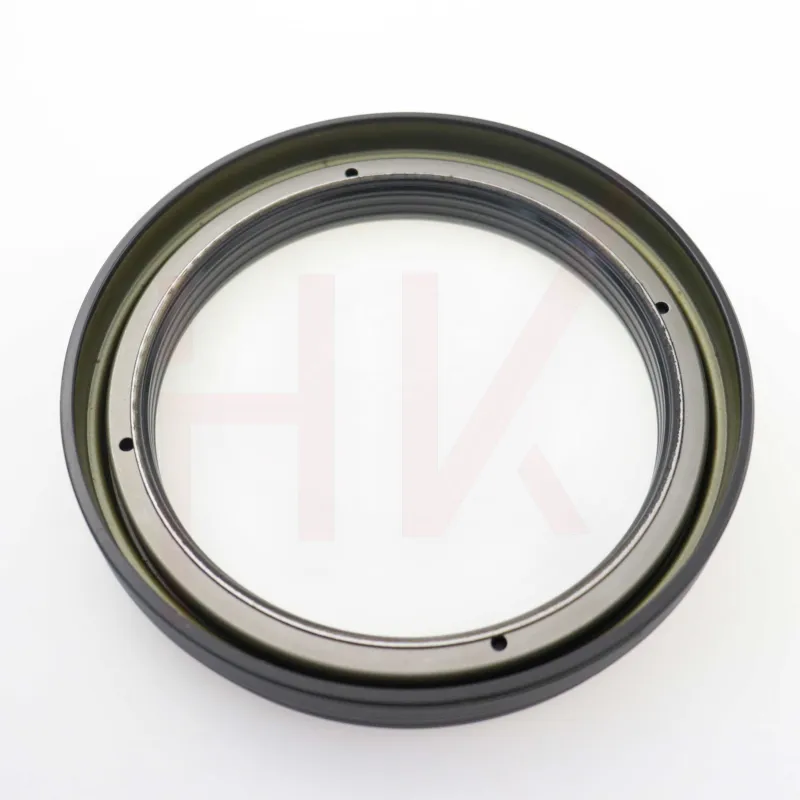Dec . 03, 2024 12:39 Back to list
hub oil seals axle seals
Understanding Hub Oil Seals and Axle Seals Essential Components for Vehicle Performance
When it comes to maintaining the performance and longevity of vehicles, certain components play crucial roles in ensuring smooth and efficient operation. Among these components, hub oil seals and axle seals are vital for preventing leaks, protecting mechanical parts, and enhancing overall vehicle performance. This article explores the significance, functions, and maintenance of hub oil seals and axle seals, shedding light on why they are indispensable in automotive engineering.
What Are Hub Oil Seals and Axle Seals?
Hub oil seals, often referred to as wheel seals, are designed to prevent lubricant within the wheel hub from leaking out while also keeping dirt, contaminants, and moisture from entering the assembly. Located at the point where the axle meets the wheel hub, these seals are critical for maintaining the proper lubrication of bearings, thus ensuring they operate smoothly under various load conditions.
Axle seals, on the other hand, are typically situated at both ends of the axle housing and serve a similar purpose. They prevent differential fluid from leaking out and ensuring that debris does not infiltrate the axle housing, which could compromise the performance of the differential and axles. Both seals are crucial for the integrity of a vehicle’s drivetrain, as any failure can lead to severe mechanical issues.
The Importance of Hub and Axle Seals
1. Leak Prevention The primary function of hub oil seals and axle seals is to prevent leaks. If either of these seals fails, it can lead to fluid loss, which can subsequently cause damage to bearings or the differential. Over time, this can result in expensive repairs or replacements.
2. Contaminant Protection These seals also act as barriers against dirt, moisture, and other contaminants. Keeping lubricants clean ensures that moving parts operate efficiently without excessive wear and tear, which is particularly important in demanding driving conditions.
3. Maintaining Proper Lubrication Lubricants play an essential role in reducing friction and heat between moving parts. By preventing leakages, hub and axle seals ensure that the components remain adequately lubricated, which ultimately enhances their operational lifespan and reliability.
4. Safety A well-functioning vehicle is not just about performance; it’s about safety. Proper seals reduce the risk of brake failure in vehicles by ensuring that brake components are adequately maintained and not contaminated by leaking fluids.
hub oil seals axle seals

Signs of Wear or Failure
Understanding the common signs of wear or failure in hub oil seals and axle seals can help vehicle owners catch potential issues early
- Fluid Leaks Puddles of fluid under the vehicle can indicate a leaking seal. This is especially concerning if the fluid is differential oil or wheel lubricant. - Grinding Noises Unusual noises from the wheels or drivetrain, especially when turning, could suggest that bearings are not receiving adequate lubrication due to a seal failure. - Unusual Heat Overheating in the wheel hub or axle area can signal insufficient lubrication caused by leaks.
Maintenance Tips
To ensure the longevity and effectiveness of hub oil seals and axle seals, regular maintenance is essential
1. Routine Inspections Regularly check for any visible leaks or signs of fluid loss. Addressing any issues promptly can prevent further damage. 2. Seals Replacement If a seal shows signs of wear or damage, replace it as soon as possible. Ignoring damaged seals can lead to more significant repairs down the line.
3. Proper Installation Whether performing a DIY repair or taking your vehicle to a professional, ensuring that seals are installed correctly is crucial. Improper installation can lead to premature failure.
4. Regular Fluid Changes Following the manufacturer's recommendations for fluid changes helps keep the drivetrain components protected and prolongs the lifespan of seals.
Conclusion
Hub oil seals and axle seals might not be the most glamorous components in the world of automotive engineering, but their importance cannot be overstated. By preventing leaks and protecting critical parts from contaminants, these seals play an indispensable role in maintaining vehicle performance and safety. Regular inspections and timely maintenance can safeguard the integrity of these seals, ensuring that vehicles operate smoothly for years to come. As automotive technology continues to evolve, staying informed about these essential components remains crucial for both vehicle owners and mechanics alike.
-
TCN Oil Seal Metal Ring Reinforcement for Heavy Machinery
NewsJul.25,2025
-
Rotary Lip Seal Spring-Loaded Design for High-Speed Applications
NewsJul.25,2025
-
Hydraulic Cylinder Seals Polyurethane Material for High-Impact Jobs
NewsJul.25,2025
-
High Pressure Oil Seal Polyurethane Coating Wear Resistance
NewsJul.25,2025
-
Dust Proof Seal Double Lip Design for Construction Equipment
NewsJul.25,2025
-
Hub Seal Polyurethane Wear Resistance in Agricultural Vehicles
NewsJul.25,2025
-
The Trans-formative Journey of Wheel Hub Oil Seals
NewsJun.06,2025
Products categories
















